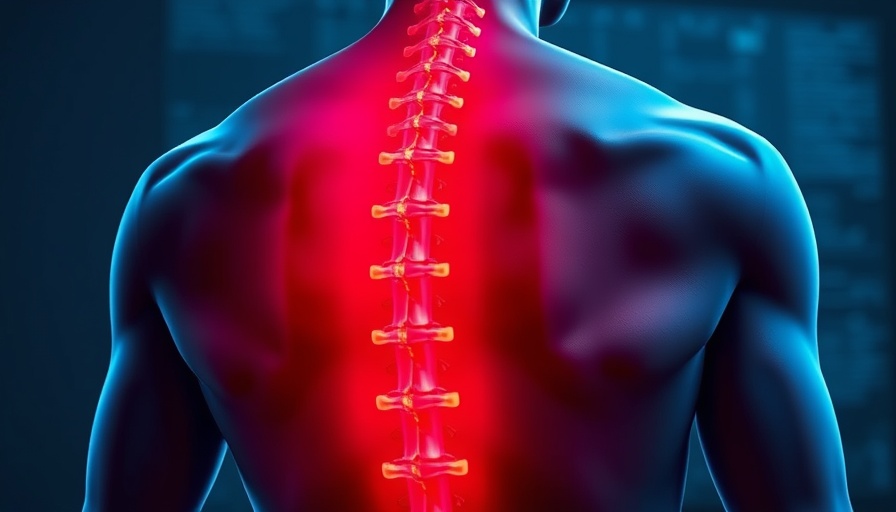
Understanding the Connection Between Diabetes and Low Back Pain
Diabetes and low back pain are both prevalent health crises affecting millions worldwide. A recent study indicates a notable correlation between the two, suggesting that individuals suffering from diabetes may also experience higher rates of low back pain. As we delve into this complex relationship, it's essential to explore the biological mechanisms involved and their implications for treatment approaches.
Biological Mechanisms at Play
One proposed mechanism for the connection between diabetes and low back pain is inflammation. Diabetes can lead to systemic inflammation, which might affect musculoskeletal health. Chronic low-grade inflammation may damage spinal structures, thus increasing the likelihood of experiencing back pain. This multifaceted interaction opens avenues for potential treatments targeting inflammation in diabetic patients, providing relief from both high blood sugar levels and discomfort in their back.
Statistical Insights: The Numbers That Matter
Research has shown that individuals with diabetes are up to 40% more likely to report low back pain. These figures are particularly concerning, given the increasing prevalence of diabetes globally. Given that low back pain can greatly reduce the quality of life and hinder daily activities, understanding this statistic is crucial for healthcare professionals who treat diabetic patients.
The Emotional and Social Toll of Living with Dual Conditions
Living with diabetes and chronic low back pain can significantly affect a person's emotional well-being. The constant pain can lead to feelings of hopelessness and frustration, impacting mental health and social interactions. It's important to address these emotional aspects when providing care to patients, as a holistic approach that considers both physical and mental health tends to deliver better outcomes.
Alternative Approaches to Treatment and Management
Conventional treatment for pain management often includes NSAIDs or prescription medications, but these solutions can carry risks, particularly for individuals with diabetes who may have pre-existing complications. Alternative treatments, such as physical therapy, acupuncture, and lifestyle changes, can be effective in managing symptoms without the potential side effects of traditional medications. Educating patients about these options can empower them to take charge of their health.
Future Predictions: New Directions for Research and Treatment
With the relationship between diabetes and low back pain coming to the forefront of medical research, future studies may yield innovative treatment modalities. Advancements in biotechnology may lead to more personalized approaches, allowing healthcare providers to tailor treatments based on individual patient needs. As the understanding of this connection deepens, we anticipate a broader implementation of interdisciplinary care models that address both conditions simultaneously.
Addressing Misconceptions: Overcoming the Stigma of Chronic Pain
One prevalent misconception is that individuals suffering from chronic conditions are exaggerating their symptoms. This stigma can lead to inadequate support and treatment, leaving patients feeling dismissed. It is crucial to understand that the pain experienced by those with diabetes and back issues is real, and addressing the stigma surrounding these conditions is vital for creating supportive care environments.
Practical Insights: What Can You Do?
For individuals, particularly those living with diabetes, it is important to monitor back health and seek routine evaluations by healthcare providers. Engaging in gentle exercises to strengthen back muscles and maintaining good posture can mitigate the risk of developing back pain. Additionally, incorporating a healthy diet can help manage diabetes and limit associated complications.
Conclusion: How This Knowledge Can Empower You
Understanding the link between diabetes and low back pain can significantly enhance the approach to treatment. With increased awareness, healthcare providers can develop comprehensive care plans that address both issues, leading to improved quality of life. If you or a loved one is affected by these conditions, explore all possible treatment options and consult healthcare professionals to create a personalized management strategy.
 Add Row
Add Row  Add
Add 




Write A Comment